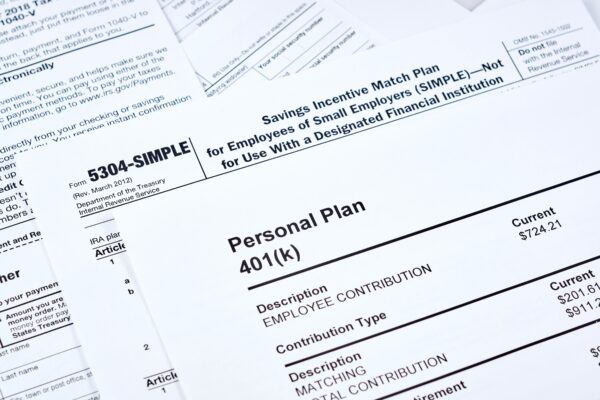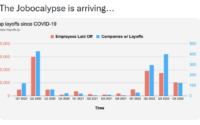Less Than 60 Percent of Baby Boomers Own Retirement Accounts
Millions of working-age Americans aged between 56 and 64 are edging closer to retirement without having savings stashed away.
Census data for 2020 shows that less than 60 percent (approximately 58.1 percent) of American “baby boomers”—generally defined as those born between 1946 to 1964—owned a retirement account three years ago, at a time when the COVID-19 pandemic upended jobs and the global economy.
That means over two-fifths of baby boomers nearing retirement had no retirement savings stored in financial institutions.
The U.S. Census Bureau defined retirement accounts as 401(k), 403(b), 503(b), Thrift Savings Plans, Individual Retirement Accounts (IRA), Keogh accounts, and defined-benefit and cash balance plans.
The Census data also revealed that just 56.1 percent of “Generation X” members, or those aged between 40 and 55 had a retirement account in 2020, while roughly half of “millennials” ages 24 to 39 had one.
Meanwhile, just 7.7 percent of Americans who fall under the “Generation Z” category, meaning those aged 15 to 23, owned retirement accounts in 2020. However, given their ages, they also have more time to accumulate additional retirement savings.
A separate report (pdf) from the TransAmerica Center for Retirement Studies found a similar trend, noting that baby boomers have been “susceptible to employment risks, volatility in the financial markets, and increasing inflation—all of which could disrupt their retirement plans” in the wake of the COVID-19 pandemic.
Baby Boomers’ Confidence in ‘Comfortable’ Retirement Waning
That report is based on an online survey conducted between October 28 and December 10, 2021, among a nationally representative sample of 5,493 workers aged 18 or over in a for-profit company employing one or more employees.
It found that just 23 percent of Baby Boomers feel “very confident” that they can fully retire with a comfortable lifestyle, while 48 percent are “somewhat confident.” Approximately 16 percent are “not too confident,” and 14 percent are “not at all confident” that they will be able to enjoy what they consider to be a comfortable lifestyle after retiring from the workforce.
Just 22 percent said they believe they are currently building a “large enough retirement nest egg,” while 34 percent said they “somewhat disagree” or “strongly disagree” that this is the case.
Overall the TransAmerica Center for Retirement Studies found that 85 percent of Baby Boomers expect Social Security income to be one of their sources of income after they retire, while 78 percent plan to use self-funded savings.
When it comes to their primary source of income in retirement, though, approximately 40 percent cited Social Security, the report found.
The average monthly Social Security check to a retired worker in February 2023 was about $1,782, or about $21,384 annually, according to the Center on Budget and Policy Priorities.
However, statistics from the U.S. Bureau of Labor Statistics (BLS) show that an American household headed by someone aged 65 and up spent an average of $48,791 per year, or $4,065.95 per month, between 2016 and 2020.
Cost of Living Crisis
Meanwhile, households headed by someone between the ages of 65 and 74 spent $53,916 annually during that same time period, while spending declined to $41,637 annually for people aged 75 and older.
Those nearing retirement, aged between 55 to 64, spent $65,392 annually between 2016 and 2020, the data shows, far more than the $21,384 they are set to receive annually in Social Security.
Amid inflation, the cost of living has soared, meaning the typical American household spent $5,111 per month, on average, in 2021, according to the Consumer Expenditure Survey from BLS.
As of 2023, that figure stands at $5,577 for an average household or $66,928 per year, BLS data shows.
“With Social Security, you should hope for the best but prepare for the worst,” Dave Goodsell, executive director at the Natixis Center for Investor Insight, told CBS News.
“What people need to do, the bottom line is take a minute to step back and say, ‘What do I need to retire, what will my income be,’ and then start saving,” he added.
The latest data comes as the OASI Trust Fund, which pays monthly benefits to retired workers and their spouses and to survivors of deceased insured workers, is “projected to become depleted in 2033, one year sooner than last year’s estimate, with 77 percent of benefits payable at that time.”
That would mean huge cuts in benefits to the 67 million retired Americans who receive Social Security checks every month.
In response to the current volatile economic environment, data shows that more baby boomers expect to work past the age of 70 or do not plan to retire at all.

Baby Boomers Second-Guessing Retirement
The TransAmerica Center for Retirement Studies found that the main reasons Americans aged between 56 and 64 cited for either working later or sticking with work were financially related (82 percent) or healthy aging-related (78 percent).
However, just 59 percent of baby boomers said their employers are age-friendly and provide opportunities, work arrangements, and training and tools needed for employees of all ages to be successful, meaning a backup plan is still important.
“Obstacles baby boomers have faced in saving for retirement include extremely low-interest rates on fixed income investments, the dot com crash, the real estate/ financial crisis, the pandemic, and more recently 40-year-high inflation,” David Rosenstrock, director at Wharton Wealth Planning, told Fortune Recommends.
“In addition, rising health care costs, increasing life expectancy, caring for aging parents, the potential for reduced Social Security benefits (in the future), and labor force automation are all obstacles to saving,” Rosenstrock added.
Rosenstrock recommended Americans delay tapping into their Social Security benefits as soon as they reach the age of 62 to avoid seeing a reduction in the amount they are eligible for and take advantage of “catch-up contributions” in which individuals aged 50 or older can save more in their 401(k)s and individual retirement accounts (IRAs) than the typical annual contribution limits set by the IRS.
Additionally, Rosenstrock suggests that some Americans consider working even after they retire, either in a part- or full-time capacity to supplement their income.
“Delaying retirement can have a significant impact on retirement finances by giving your existing retirement savings more time to grow and shortening the period of retirement you will need to pay for,” Rosenstrock said.
[ad_2]
Source link


